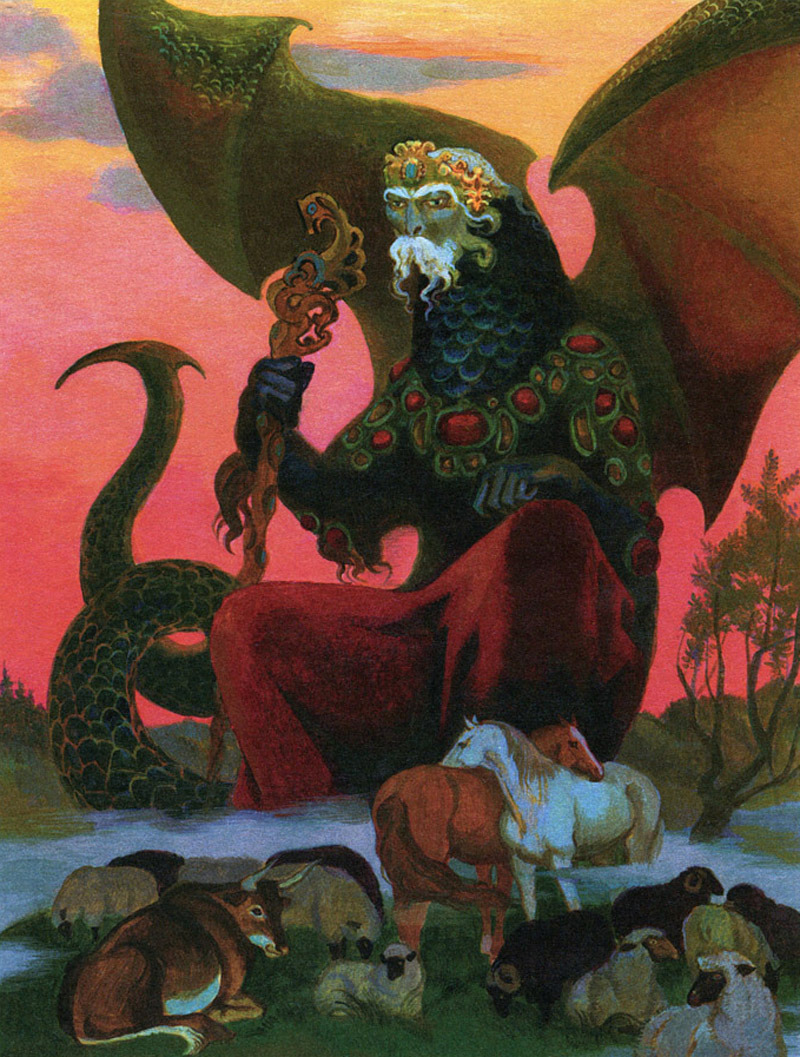Description
‘Myths and Legends of Ancient Slavs’
Illustration by N. Bukanova, 2007
According to second source, this might be a depiction of Belbog, the good god.
Belbog
The very name of this deity is consonant with the word "good." He was considered the custodian and bearer of good, luck, justice, happiness. The ancient Slavs used the test of iron to establish the guilt or innocence of a person. The suspect was given a red-hot piece of iron in his hands and told him to walk about ten steps. And the one whose hand remained unharmed was recognized as right. Hence the concept of "branded with iron" since ancient times was equivalent to "branded with shame."

TaraelBlackwing
MemberDoesn't look like Belbog to me. The attributes of a serpent and themes of cattle are mostly associated with Veles or Volos, who is known as "cattle's god", and he is the god of the underworld. It seems to me that the second source link simply uses a randomly found picture of a Slavic Deity (Veles in this case) for it's Belbog section without any proper research on the imagery traditionally associated with him.
smat dragon
MemberInteresting! Thanks for clarifying
Sucks that we don't have much more info or a true original source of this beautiful piece :/
TaraelBlackwing
MemberYeah, we don't have much info on many Slavic deities either. Belobog and Chernabog in particular are mostly known through second-hand accounts by non-Slavic chroniclers many of which were quite late.
Login to respond »